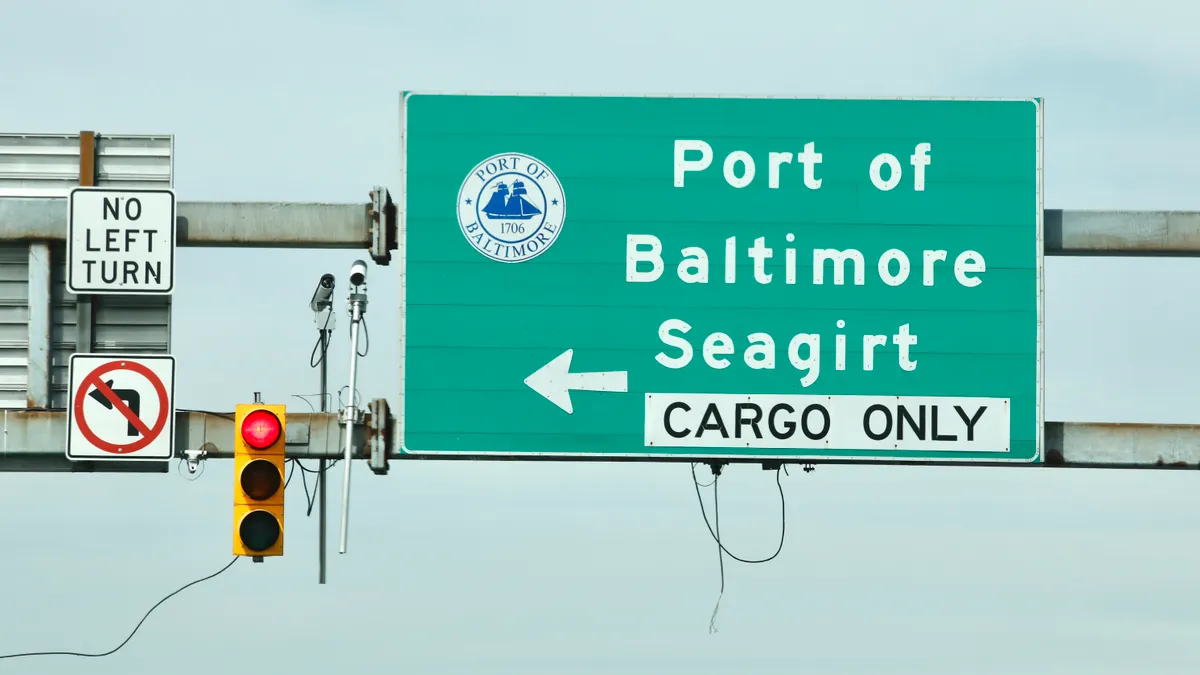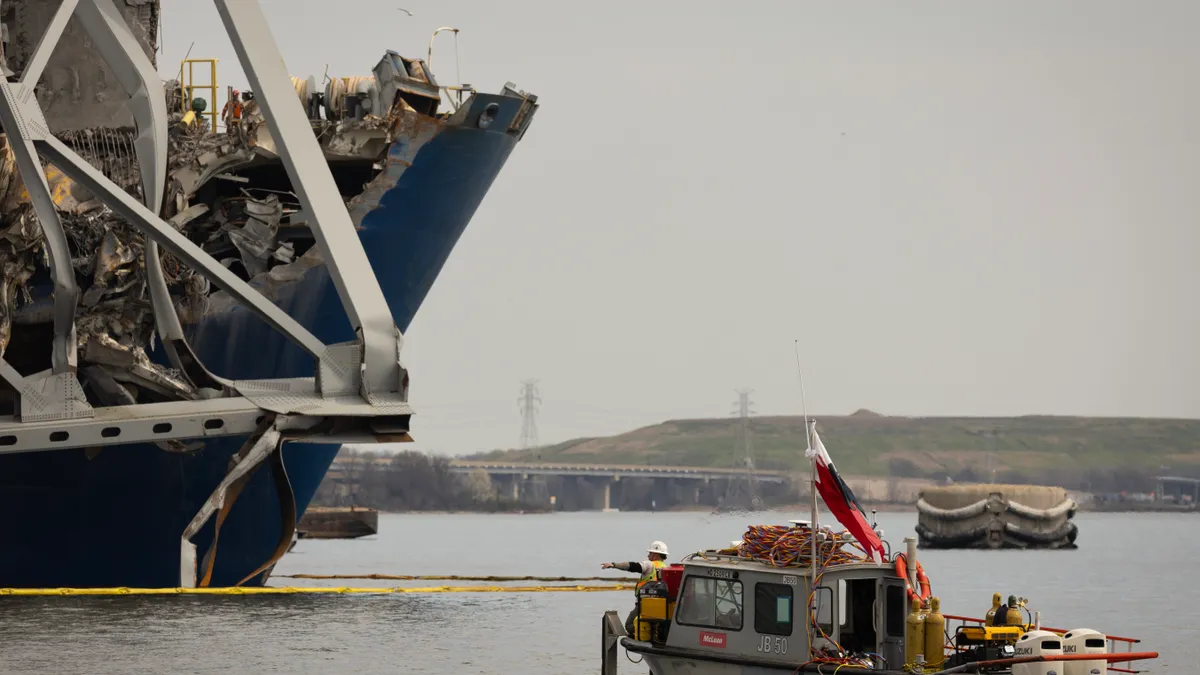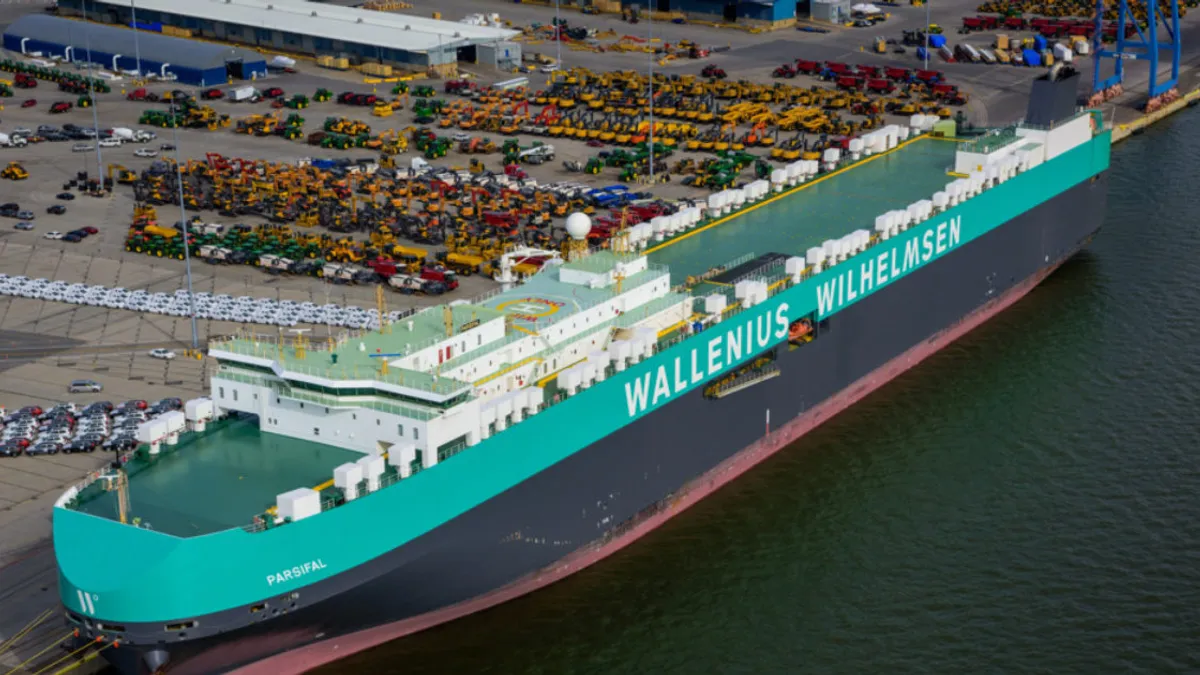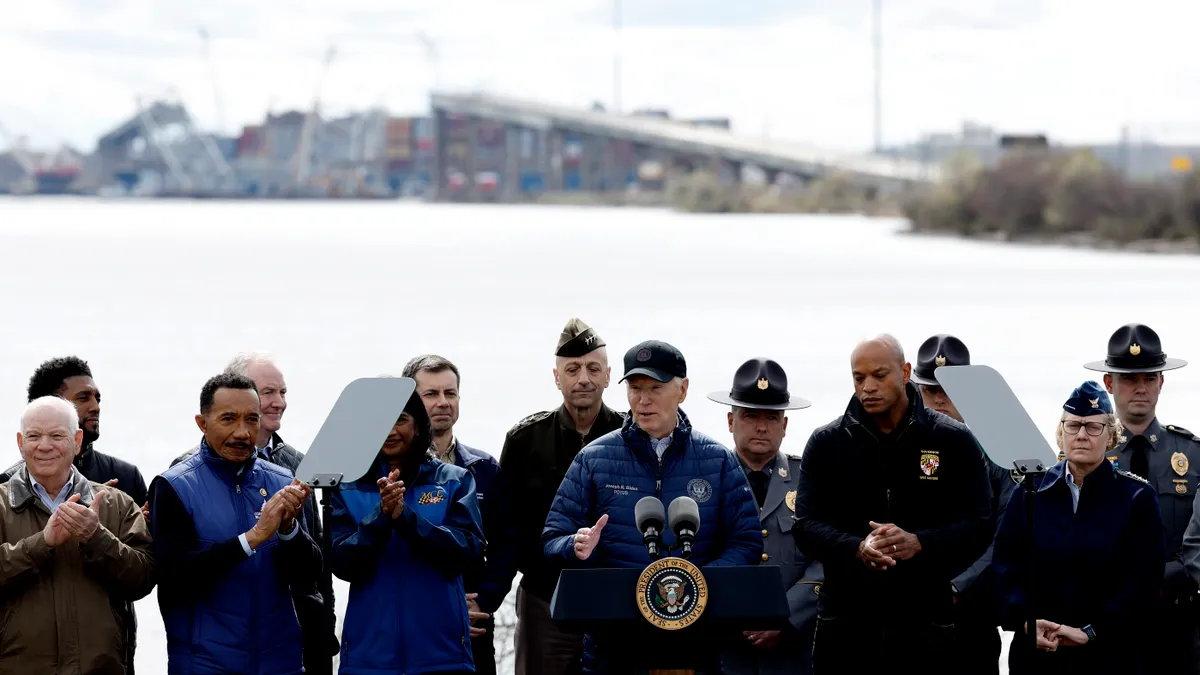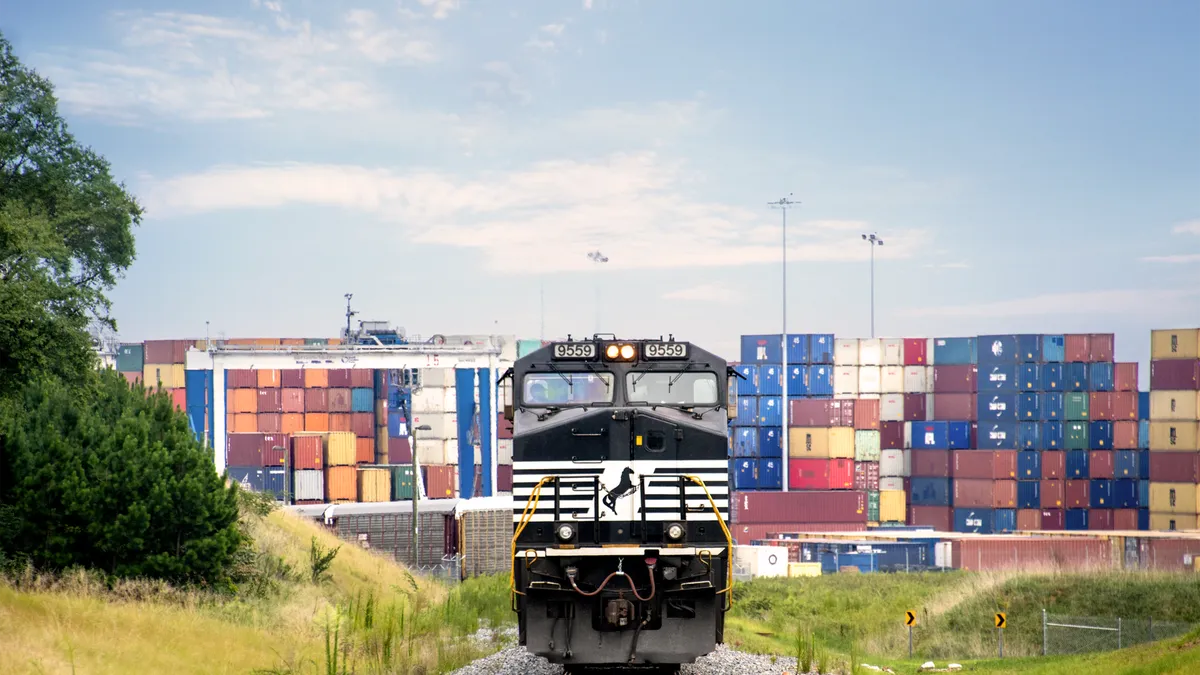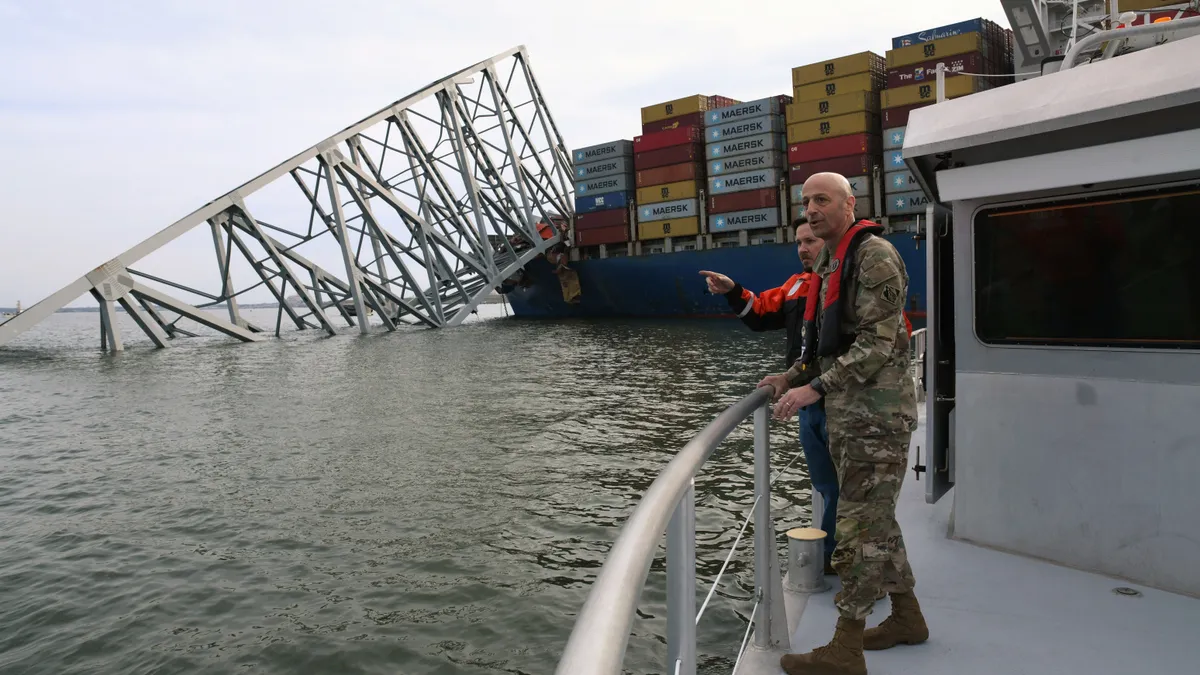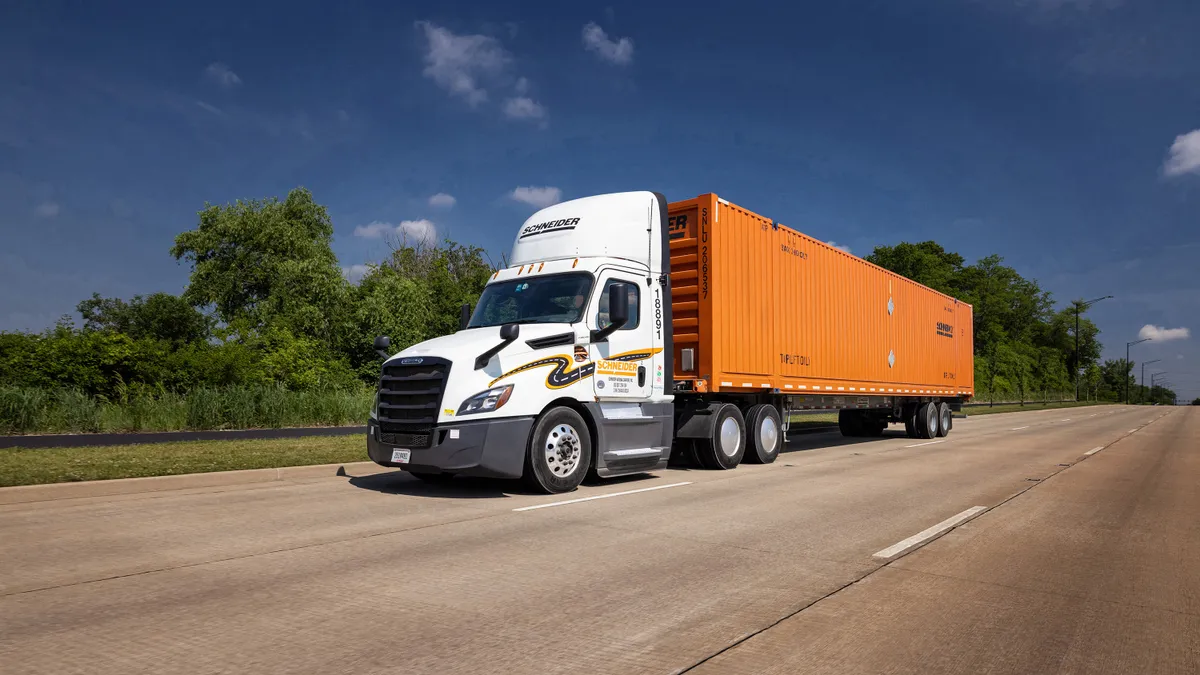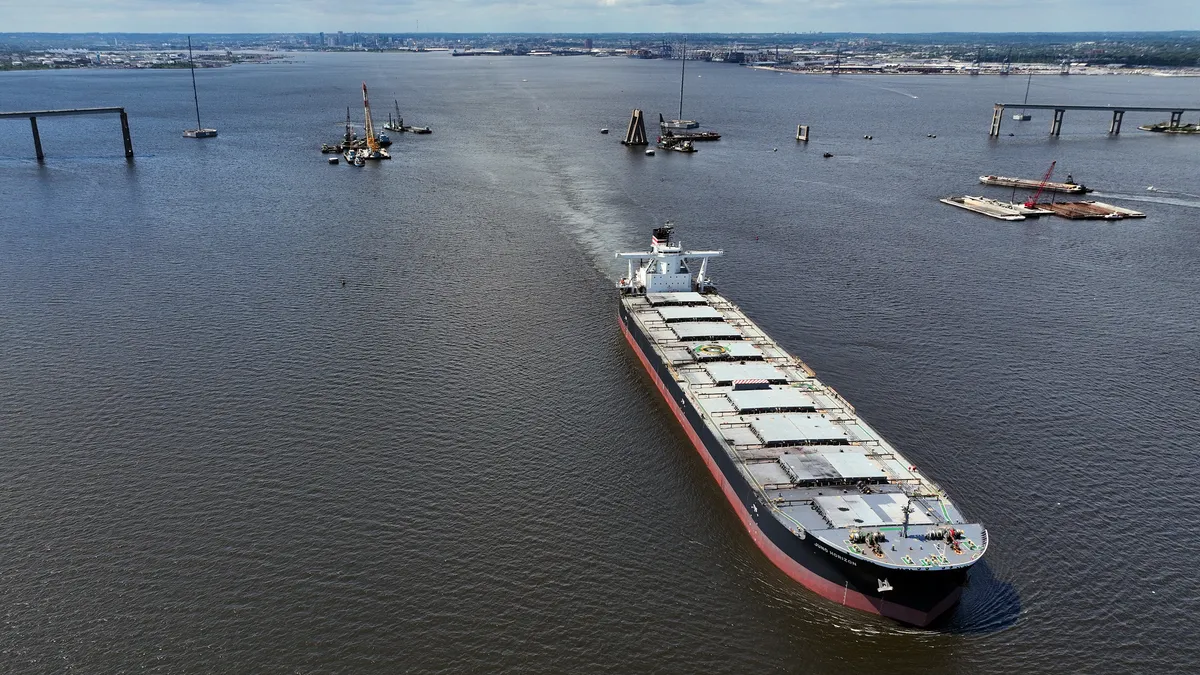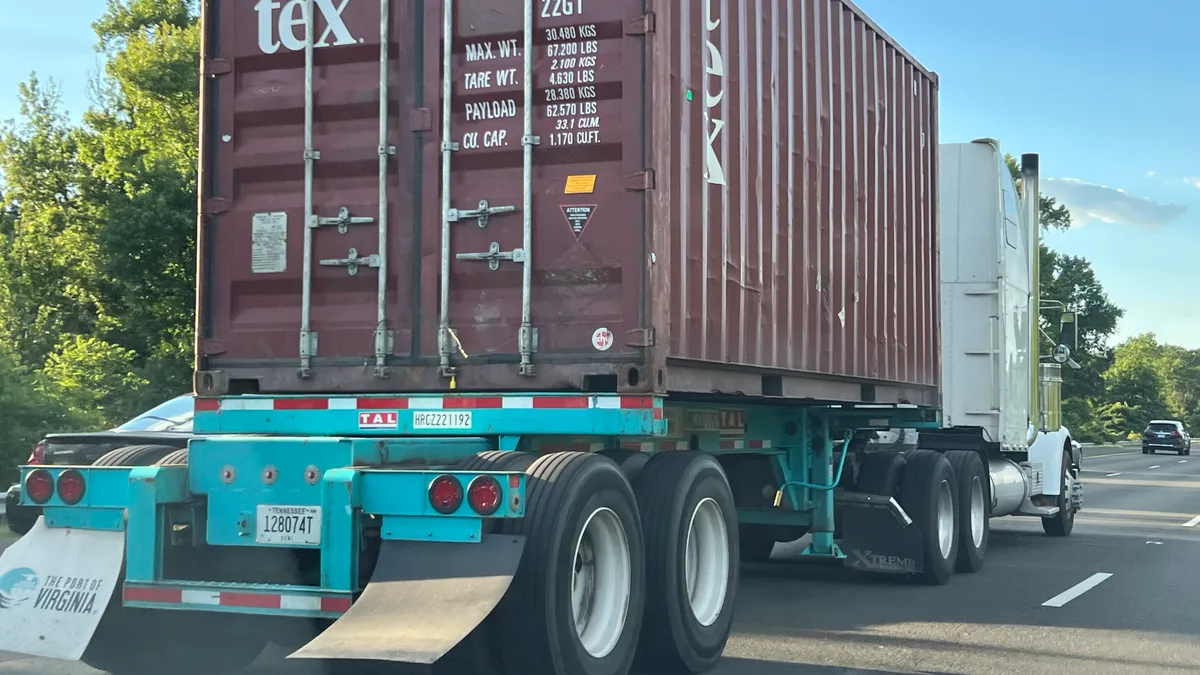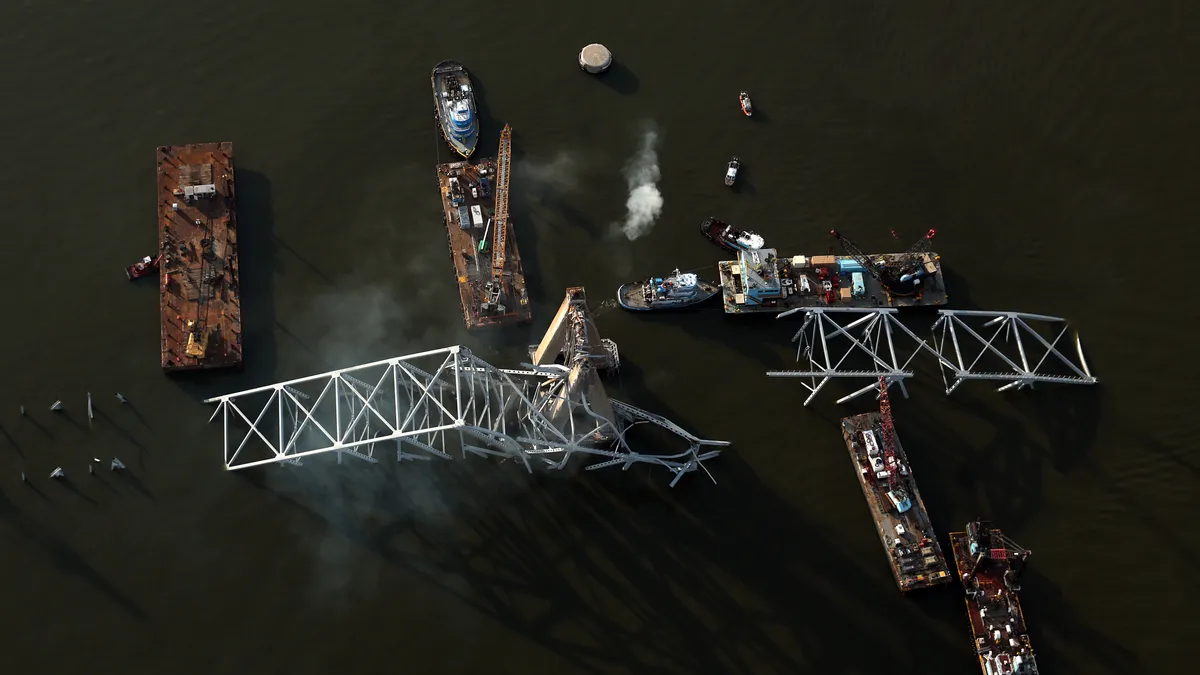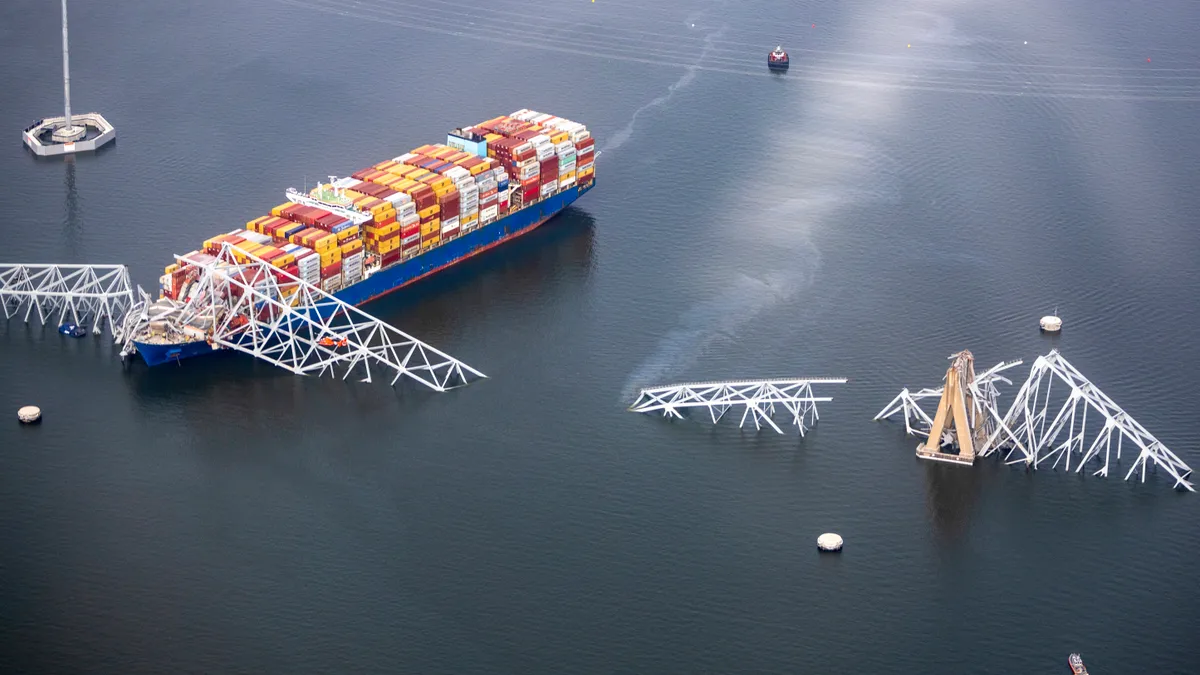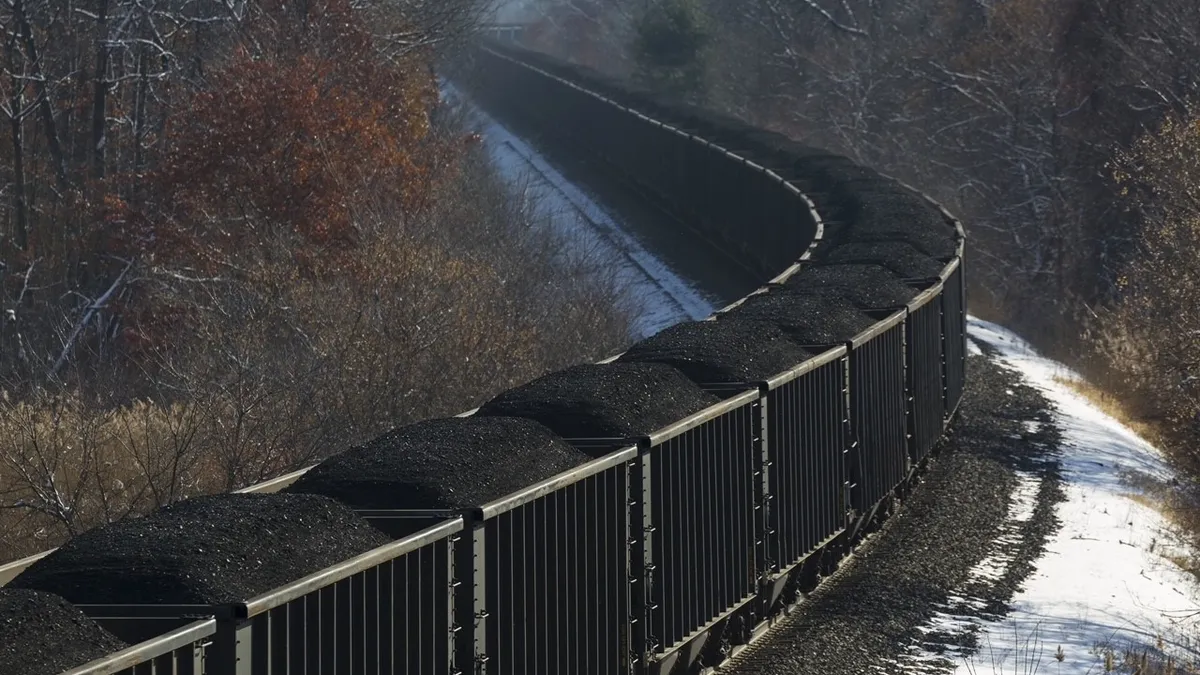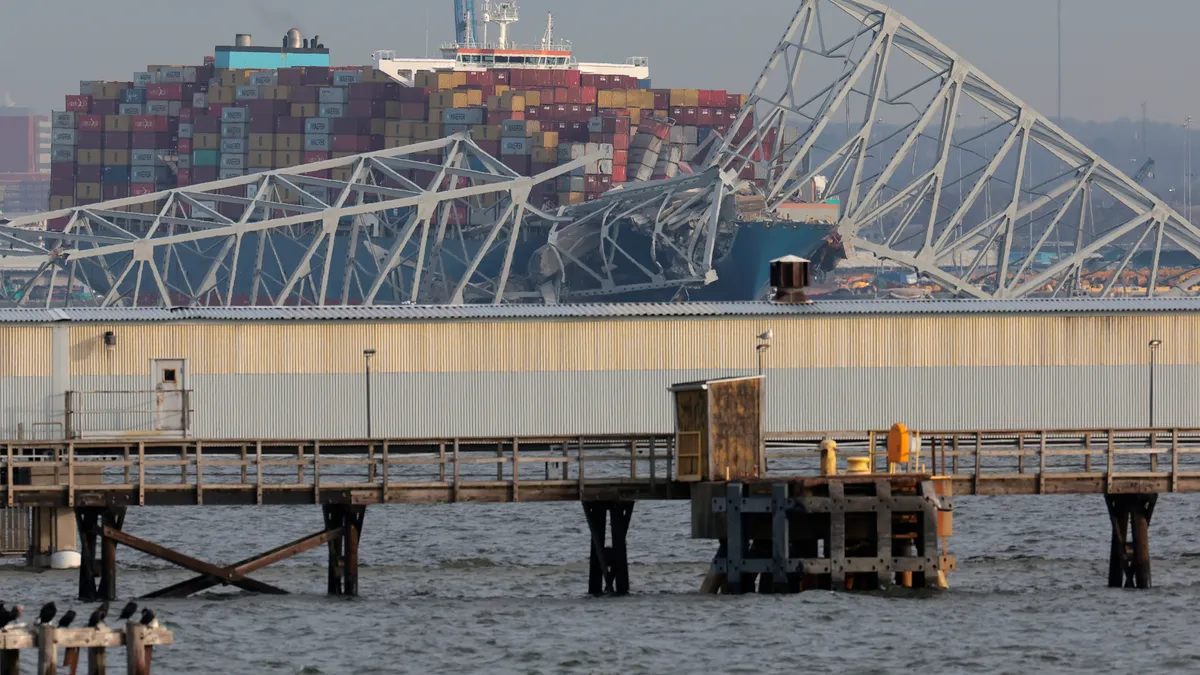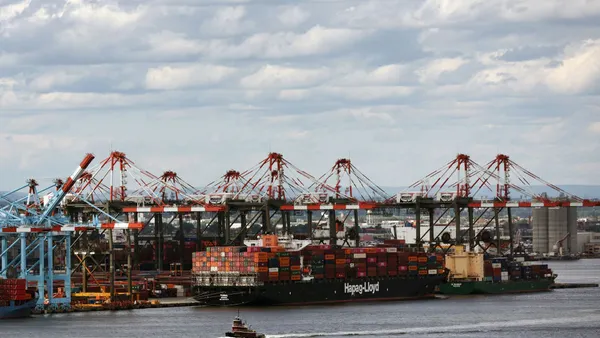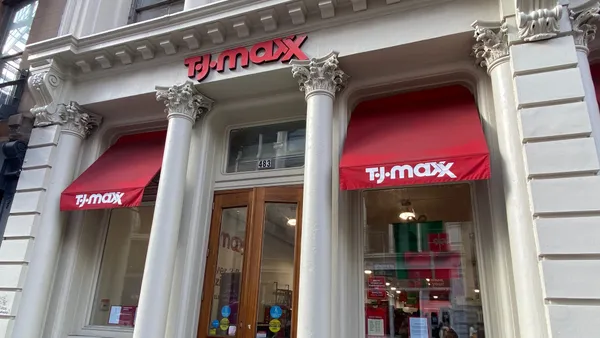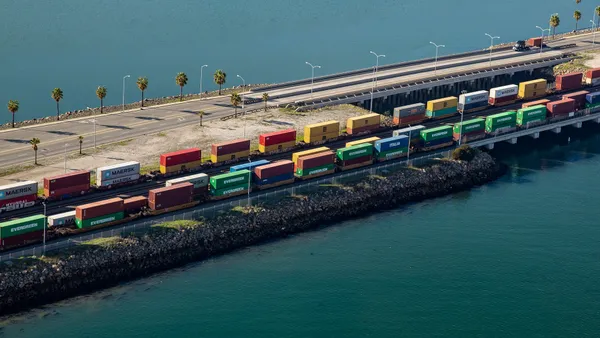The Francis Scott Key Bridge collapse in Baltimore Tuesday will cost truckers and other drivers time and money for the foreseeable future as they reroute to the city’s tunnels, local streets or the western side of Interstate 695.
President Joe Biden pledged the federal government would pay to rebuild the 1.6-mile-long span, which served as a major freight and commuting corridor. But that priority pales in comparison to a more pressing concern for the Port of Baltimore, the trucking industry and the region: Removing the vessel and the collapsed bridge from the shipping channel.
“Unless the waterway is cleared, and deliveries are able to be made to the port, we're going to have a massive diversion of ships to other ports,” Maryland Motor Truck Association President and CEO Louis Campion said in an interview. “The debris is just going to serve as a blockade to the port and just choke off economic activity.”
The busiest U.S. seaport for autos and light trucks, the Port of Baltimore is a key economic engine for the city and the state, directly employing over 15,000 workers and indirectly responsible for nearly 140,000 more jobs in trucking, warehousing and other related industries.
That engine is sputtering after the bridge's collapse, an event that led to the presumed deaths of six construction crew workers, according to reports. While dockworkers and truckers continued to move existing cargo at the port’s Southeast Baltimore terminals following the container vessel crash that brought down the bridge, no seaport can function for long without ships delivering imports and picking up exports.
“If they don't get the shipping channel open, everything comes to a halt,” said Scott Cowan, president and CEO of the International Longshoremen’s Association Local 333, which represents Baltimore dockworkers.
Local truckers, communities brace for challenges
Local trucking providers whose operations rely on Port of Baltimore runs will be more affected than larger fleets that can shift resources across regional or national networks, Campion said.
“I already have some companies who are talking about some of the diversion that's going to have to occur and what the impacts on their costs are going to be,” he said.
Trucks rumbling down local streets — a scenario that typically presents congestion, safety and noise concerns for communities — will be difficult to avoid as the thousands of trucks per day that crossed the bridge follow various detours, Campion said.
“There's going to be congestion everywhere as a result of this on all the major arteries through and around Baltimore,” he said.
Longshoremen will work as much as they can
Port crane mechanics are usually the last dockworkers to leave the port’s Seagirt Marine Terminal, and a couple of them crossed the bridge on their way home just an hour or so before the 984-foot container ship brought it down, their ILA local president said.
Ports America Chesapeake, which operates the port’s container terminal, has shared plans to assign union dockworkers to maintenance, equipment and facilities work during the down time, Cowan said.
“They're gonna try to work people as long as they can,” Cowan said. “It'll keep some of our members working, and hopefully by the time that stuff gets completed, the shipping channel will be opened back up.”
Once the existing cargo on the docks runs out, “which will be quick,” Cowan said, “it’s going to be devastating for our members.”
“It’s going to be rough for a couple of weeks,” he said. “It depends on how long it takes for the shipping channel to get opened up. ... This could wreak some havoc on the region.”
‘The lifeline to the supply chain’
Pamela Miller, an owner-operator who has run the port for 40 years, expects nearby warehouses to become inundated with outbound exports and empties until they can be delivered to terminals.
“It's going to kill the economy,” she said. “Truckers from all over the country bring stuff in.”
Miller, who is leased to PiCorp, pointed out that truck drivers have a few alternative options for accessing the port or otherwise circumventing the destroyed bridge.
Ocean carriers and their shipper clients, on the other hand, can’t use the Port of Baltimore without a clear shipping channel to access it.
“That channel is the lifeline to the supply chain,” she said. “There's no other way in.”









